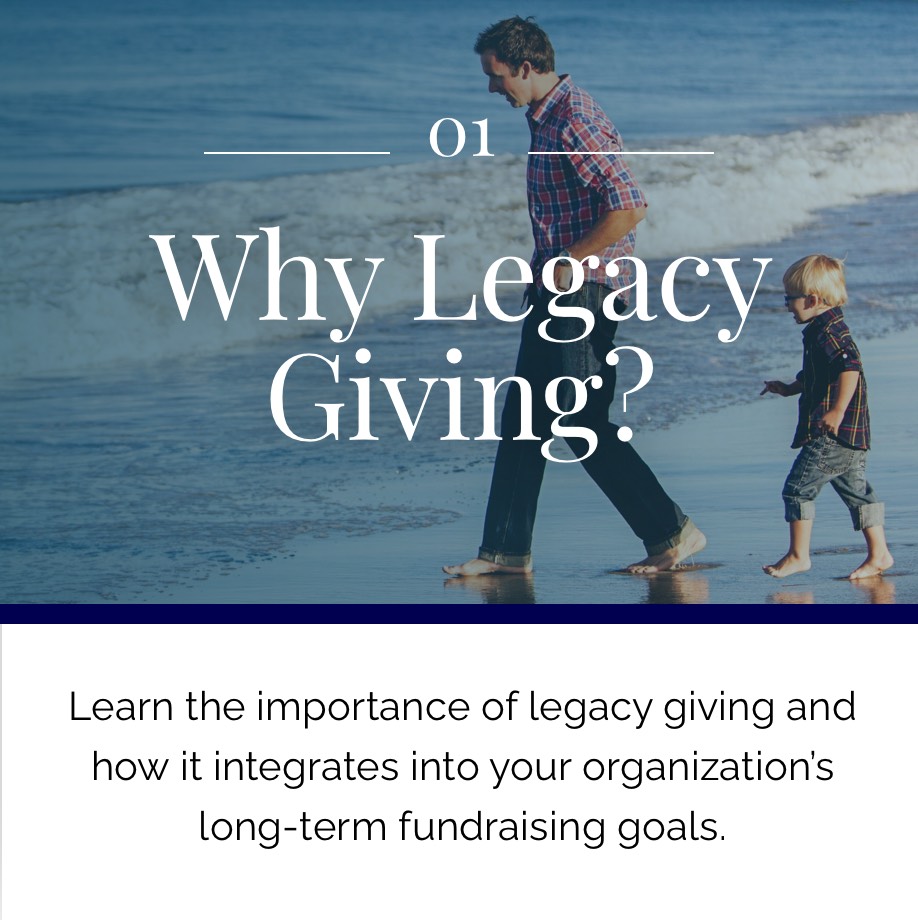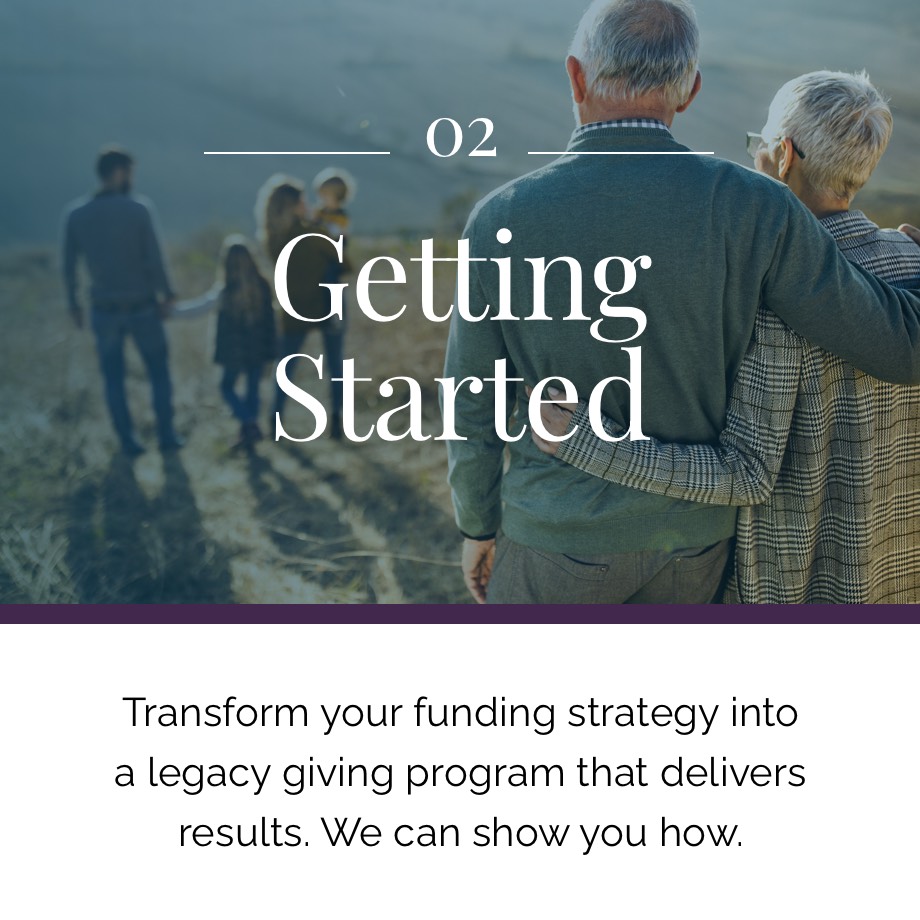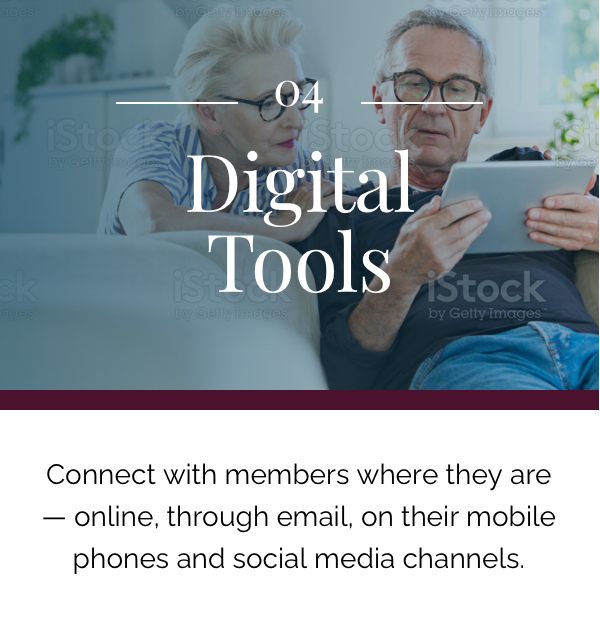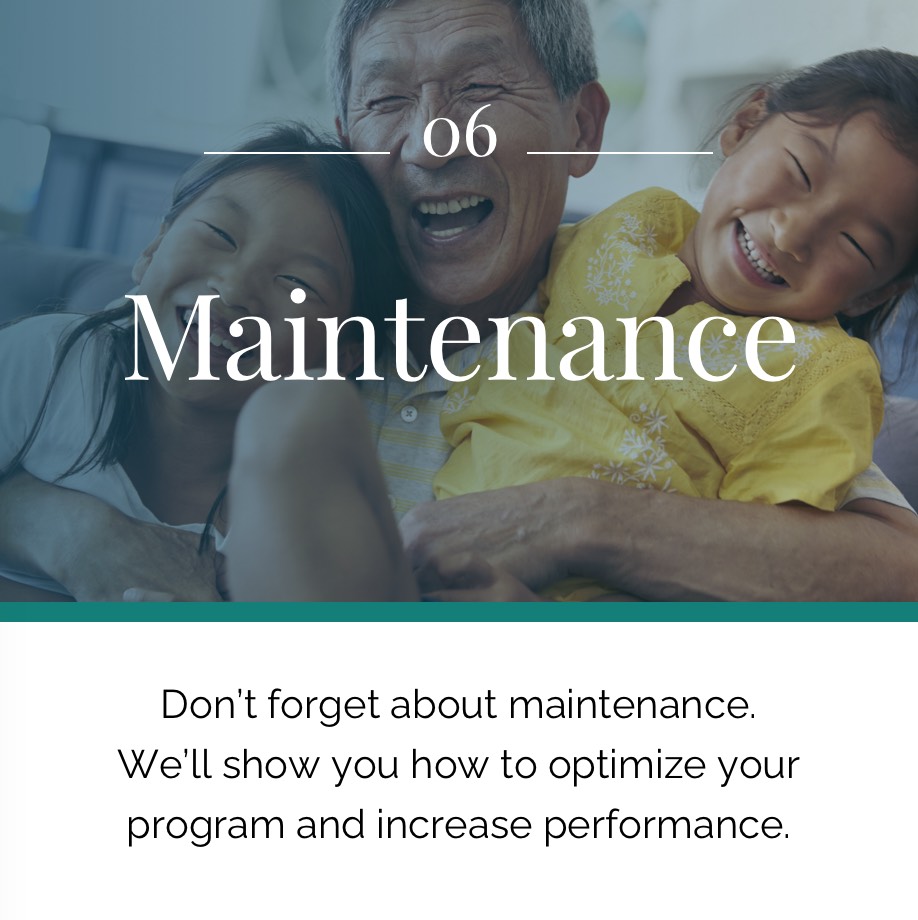Chapter 02
Getting Started
Let’s build a solid program framework

Awareness is key
Let’s face it, most people don’t know what planned giving is or how to establish a legacy giving fund. That’s why it’s important to introduce the concept to members. After all, donors won’t bequeath a gift to your organization if they don’t know it’s an option available to them. But before you start promoting legacy giving, you’ll need to do some initial planning upfront. During this chapter, we’ll walk through the steps it takes to get your program off the ground, starting with defining your program’s purpose.
The power of purpose
Behind every successful legacy giving program is a powerful purpose. So that’s where you should begin, by defining how your organization will put future legacy gifts to good use. Are you asking donors to contribute to a general fund that supports the ongoing mission of your church or nonprofit? Or are you raising money for a specific initiative, like a new building, sanctuary, or program? By defining the need behind your fundraising strategy, you’ll be better equipped to create a purpose-driven message that connects with donors.

Outline your goals
Ask yourself: What will success look like in a year? These are your program goals. They can be monetary or task-oriented, for example:
Raise $500,000 in new funds
Garner 10 new legacy gifts
Host four legacy giving events
Develop a legacy giving page on your website
Write a story about generosity on your blog
Create and distribute a legacy giving flyer
A solid foundation
With your purposes defined and your goals in place, now you can develop the building blocks of your program. Here are some initial steps to take.

Define your audience
Start by creating a list of your potential donors. Is it your entire congregation? Or a select few? Define each of your target audiences, making sure to outline the characteristics of each. This information will impact how you address each audience.

Determine your communication channels
With your audience defined, ask yourself: what’s the best way to reach your potential donors? Will you use newsletters, email, social media? Will you create signs, posters, and banners? Will you call members of your congregation? Knowing this now will help develop your plans.

Create a communications calendar
We recommend developing a 12- to 18-month calendar that outlines channels and messages and includes regular communications over a long period of time. Remember to avoid key events, such as Advent or Easter.

Develop a budget
Building a campaign to promote legacy giving takes time and resources. By defining a budget upfront, you’ll be able to allocate funds for line items like personnel (freelance designers or web developers) and outside costs (printing, website hosting, or events).
Document, share, and track progress
Be sure to capture all of the foundational elements about your program in one place, like a Word document or PowerPoint deck. And don’t forget to share your progress with your team and revisit your goals periodically to make sure you’re on track. Now that we’ve discussed the foundational elements of legacy giving, let’s learn how to create program materials.

Explore additional resources
Explore the next chapter

With a solid framework in place, now you can begin creating your program materials.





